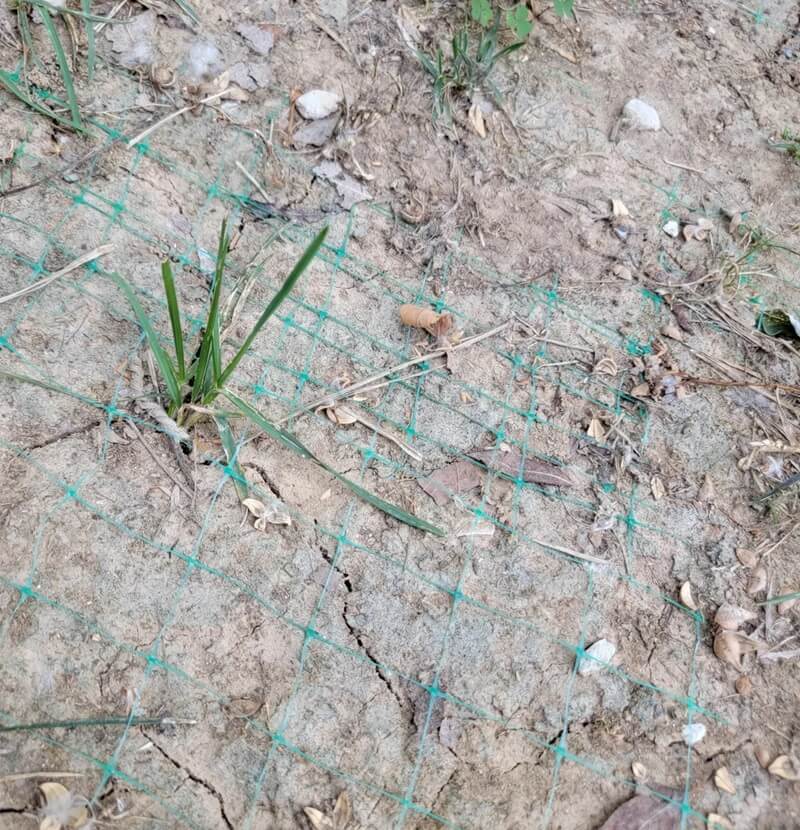A new homeowner was frustrated to find that the previous owners hadn't just planted grass in the yard — they had installed it using non-biodegradable plastic netting.
The homeowner took to Reddit to ask for advice on how to deal with the situation, describing how the netting had "become exposed in a couple particularly dry/bare spots."
They asked, "Am I able to remove this netting without damaging the areas that DO have grass? Is there a best method to this? … Besides just being unsightly, the netting also snares rakes and other tools which is frustrating."

They shared photos, which show the stubborn green plastic netting stretching across the entire yard, interspersed with patches of grass and dirt.
Commenters had encountered similarly frustrating situations.
One person wrote, "We are constantly ripping this up whenever we have to do small lawn repairs, etc. I hate it so much."
"I'm 9 years into a new house and get this 'fishing net' stuck on my mower on occasion," another echoed.
One person, who works in landscaping, said, "I hate this … Snakes and small reptiles get caught on it and will die if not rescued. We always recommend the biodegradable stuff, but many times people will just use this instead."
Plastic netting like this is used to hold seeds and mulching material in place while grass seed germinates. But while the netting is supposed to degrade over time, that generally doesn't happen, even for products that are — often misleadingly — labeled as "biodegradable." One genuinely biodegradable alternative is to use jute or coconut fiber yarns instead.
New homeowners often encounter issues like this, whether it's stumbling upon buried sheets of stubborn plastic, combing through piles of toxic rubber mulch, or struggling with other impossible-to-eradicate landscaping blunders from previous owners.
For OP, keeping the grass would also mean keeping the netting, seeing as they are intertwined. But one commenter advised going the rewilding route instead, suggesting, "The best thing to do is rip it all up."
They have a point. The traditional American grass monoculture is both more expensive and more laborious to maintain than native plants, which is why more homeowners are looking to make the switch.
And not only are native plants more affordable and easier to maintain, but they're also beautiful, and they don't need any ugly plastic netting to help them grow.
Join our free newsletter for easy tips to save more, waste less, and help yourself while helping the planet.









